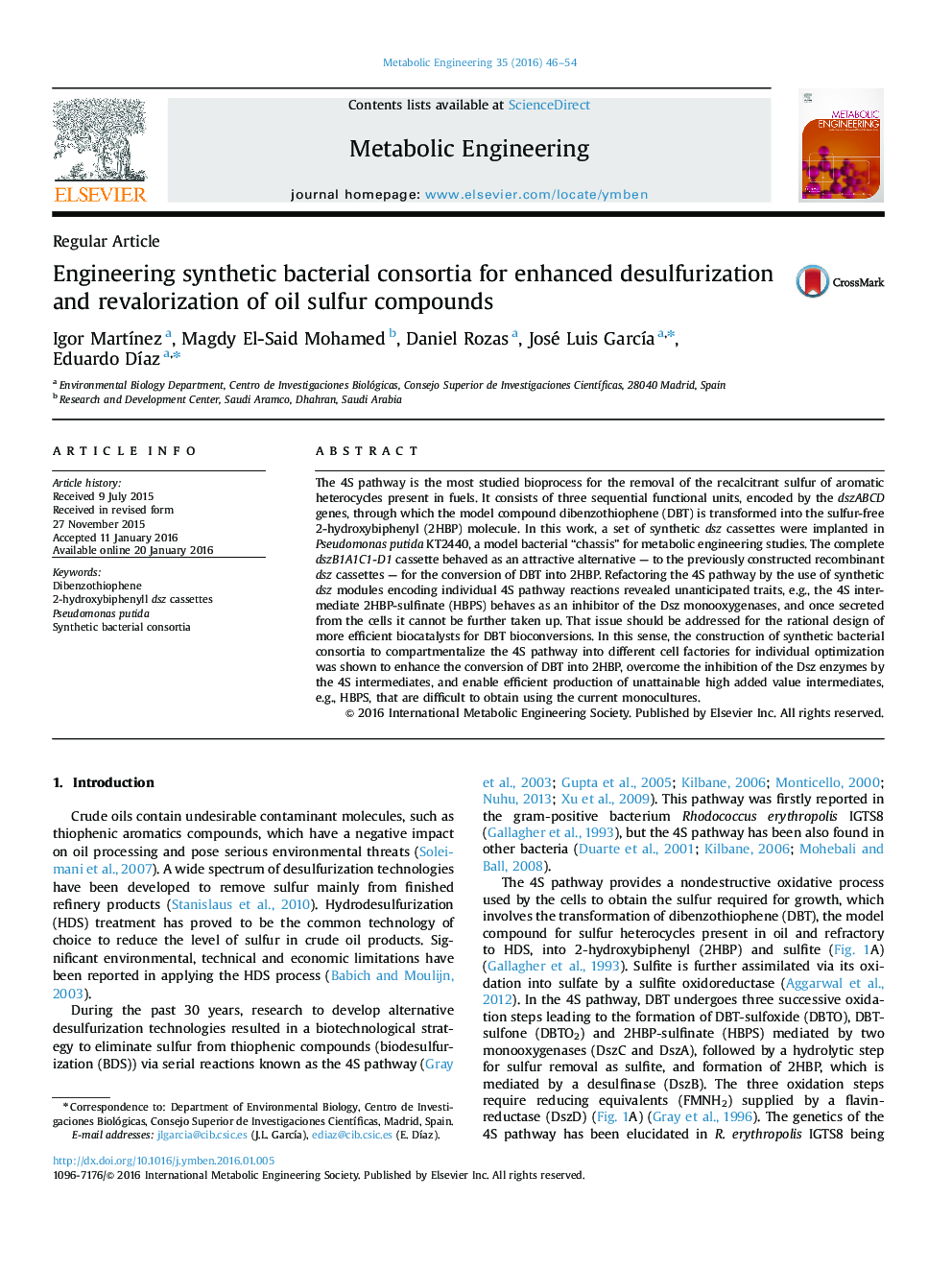| کد مقاله | کد نشریه | سال انتشار | مقاله انگلیسی | نسخه تمام متن |
|---|---|---|---|---|
| 31493 | 44803 | 2016 | 9 صفحه PDF | دانلود رایگان |
• A synthetic dszB1A1C1-D1 cassette enhances bioconversion of DBT to 2HBP in P. putida.
• Extracellular secretion of HBPS should be minimized for improving biodesulfurization.
• Synthetic bacterial consortia are shown to be a successful DBT bioconversion strategy.
The 4S pathway is the most studied bioprocess for the removal of the recalcitrant sulfur of aromatic heterocycles present in fuels. It consists of three sequential functional units, encoded by the dszABCD genes, through which the model compound dibenzothiophene (DBT) is transformed into the sulfur-free 2-hydroxybiphenyl (2HBP) molecule. In this work, a set of synthetic dsz cassettes were implanted in Pseudomonas putida KT2440, a model bacterial “chassis” for metabolic engineering studies. The complete dszB1A1C1-D1 cassette behaved as an attractive alternative — to the previously constructed recombinant dsz cassettes — for the conversion of DBT into 2HBP. Refactoring the 4S pathway by the use of synthetic dsz modules encoding individual 4S pathway reactions revealed unanticipated traits, e.g., the 4S intermediate 2HBP-sulfinate (HBPS) behaves as an inhibitor of the Dsz monooxygenases, and once secreted from the cells it cannot be further taken up. That issue should be addressed for the rational design of more efficient biocatalysts for DBT bioconversions. In this sense, the construction of synthetic bacterial consortia to compartmentalize the 4S pathway into different cell factories for individual optimization was shown to enhance the conversion of DBT into 2HBP, overcome the inhibition of the Dsz enzymes by the 4S intermediates, and enable efficient production of unattainable high added value intermediates, e.g., HBPS, that are difficult to obtain using the current monocultures.
Journal: Metabolic Engineering - Volume 35, May 2016, Pages 46–54
